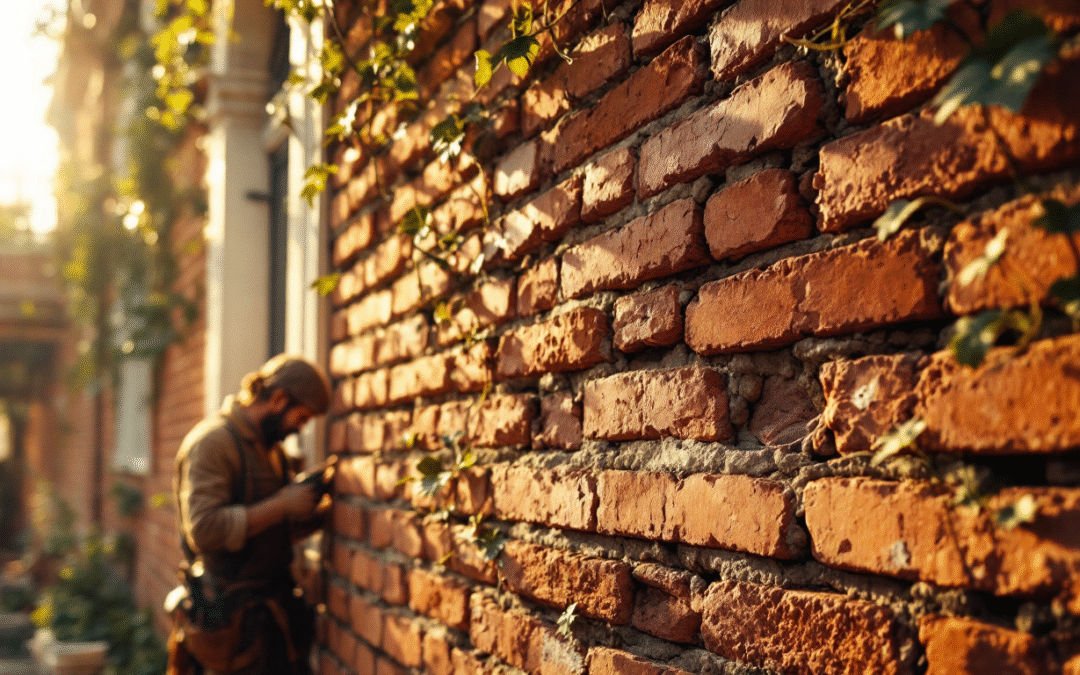I. Introduction
Historic brick buildings are irreplaceable pieces of our cultural heritage, offering a glimpse into the architectural styles and craftsmanship of the past. However, these structures face unique challenges when it comes to maintenance and preservation. The purpose of this article is to provide essential guidelines for maintaining historic brick buildings while avoiding damage and ensuring their longevity.
II. Understanding Historic Brick Type and Composition
A. Overview of Common Historic Brick Types
Historic bricks can generally be categorized into two main types: soft bricks and fired bricks. Soft bricks, often made from clay, have a porous structure and lower density, which makes them easier to work with, but also more susceptible to weathering. Fired bricks are baked at high temperatures, making them denser and more durable, though they can also be less forgiving to repair techniques used in the restoration process.
B. Differences Between Historic Bricks and Modern Bricks
The composition of historic bricks differs significantly from modern bricks, which are often manufactured to higher tolerances using advanced methods. Historic bricks exhibit greater variability in color, size, and density, often reflecting the local materials and construction practices of their time. Understanding these differences is crucial for homeowners and preservationists when making decisions about repairs or replacements.
III. Assessing Condition
A. Regular Inspection Techniques
Regular inspections are key to maintaining the integrity of historic brick buildings. Start with a visual inspection, looking for obvious signs of distress, such as cracks, efflorescence, or staining. Moisture testing is another important technique, as excess moisture can lead to deterioration and compromise the structural integrity of the building.
B. Identifying Signs of Deterioration
Recognizing early signs of deterioration can save you from expensive repairs down the line. Spalling, where the surface of the brick crumbles or peels away, is a significant indicator that bricks are deteriorating due to moisture or freeze-thaw cycles. Additionally, mortar decay can result in compromised joints, leading to further structural issues if not addressed promptly.
IV. Cleaning Techniques
A. Importance of Gentle Cleaning Methods
Cleaning historic brick buildings is crucial for aesthetic and long-term preservation, but it must be approached with care. Gentle cleaning methods help to remove dirt and grime without damaging the soft materials that make up historic bricks. Overly aggressive cleaning methods can lead to further deterioration and loss of historical integrity.
B. Recommended Cleaning Solutions
For cleaning, consider using a solution made from water and a soft-bristled brush to gently scrub the surface. Eco-friendly chemical cleaners are also an excellent option, as they can effectively cleanse bricks without introducing harmful agents that might damage them. Always test any cleaner on a small, inconspicuous area first to ensure it won’t harm the brick or mortar.
C. Techniques to Avoid Damage
To protect historic bricks during cleaning, avoid using high-pressure washing which can strip away the protective outer layer and exacerbate damage. Instead, opt for softer methods such as sponge cleaning or low-pressure rinsing. Using appropriate tools, like soft brushes or cloths, will also help safeguard the delicate surfaces of these historic structures.
V. Repair Strategies
A. Repointing Mortar Joints
Repointing is a critical maintenance task that involves replacing deteriorated mortar in the joints between bricks. Selecting the right mortar mix is essential, as modern mortars can be too hard and may cause damage to softer historic bricks. The repointing process involves removing damaged mortar, cleaning the joints, and carefully filling them with new mortar.
B. Brick Replacement
In cases where bricks are too damaged to repair, replacing them may be necessary. It is crucial to choose bricks that match the original in size, color, and texture to maintain the building’s historical authenticity. Proper techniques for replacing bricks include carefully removing the damaged ones and ensuring that the new bricks are set with the same mortar used throughout the building.
C. Techniques for Minor Repairs Versus Major Restoration
Understanding the difference between minor repairs and major restorations is crucial for the successful maintenance of historic brick buildings. Minor repairs can often be handled by knowledgeable homeowners, while major restorations may require the expertise of professionals specialized in historic preservation. Assess each situation carefully to determine the appropriate approach.
VI. Preventative Measures
A. Importance of Regular Maintenance
Regular maintenance is vital for preserving the integrity of historic brick buildings. Consistent care not only addresses minor issues before they become major problems but also contributes to the building’s overall longevity and historic value. Establishing a maintenance schedule can aid in keeping your brick structure in top condition.
B. Water Management Strategies
Effective water management is essential for protecting historic brick buildings from moisture-related damage. Regularly inspect and maintain gutters and downspouts to ensure proper water drainage away from the structure. Additionally, ensuring proper site drainage can prevent water accumulation that may lead to issues like mold growth and brick deterioration.
C. Landscaping Considerations
Landscaping can also impact the health of historic brick buildings. Choosing the right plants and considering their placement can help prevent moisture exposure to the brick. Setting up barriers, such as gravel beds or decorative retaining walls, can minimize contact with damp soil, thus protecting the foundational structure of the building. Learn how site prep affects concrete work in our Pre-Pour Checklist Guide.
VII. Expert Assistance
A. Situations When to Hire Professionals
While regular maintenance can be performed by diligent homeowners, certain situations may warrant the expertise of a professional restorer. If you encounter extensive damage or deterioration, or if you’re unsure about the best repair techniques, it’s best to consult an expert. They can provide guidance and ensure that any work complies with preservation standards.
B. Finding Qualified Restoration Experts
When looking for qualified restoration experts, it’s essential to check their experience with historic brick buildings. Research reviews, ask for references, and enquire about their familiarity with local building practices. A trained professional will understand the nuances of working with historic materials and the importance of maintaining the building’s authenticity.
C. Importance of Complying with Historical Preservation Guidelines
Complying with historical preservation guidelines is not just about legality; it’s about honoring the heritage and significance of a building. These guidelines often dictate what types of renovation and repair methods are acceptable. Working with professionals who understand these guidelines can help protect your investment while maintaining the building’s historical value.
VIII. Conclusion
Maintaining historic brick buildings requires careful attention to detail and a commitment to preserving architectural integrity. By understanding the types of bricks, regularly assessing their condition, utilizing gentle cleaning techniques, and implementing effective repair and preventative strategies, you can ensure these timeless structures endure for future generations. Prioritizing care for historic brick buildings benefits not only the property owners but also the community at large by preserving our shared heritage.
Ready to protect and restore your historic brick structure with expert care? Call us at 916-562-2345 to get a quote today and ensure the long-term beauty and stability of your cherished building.


